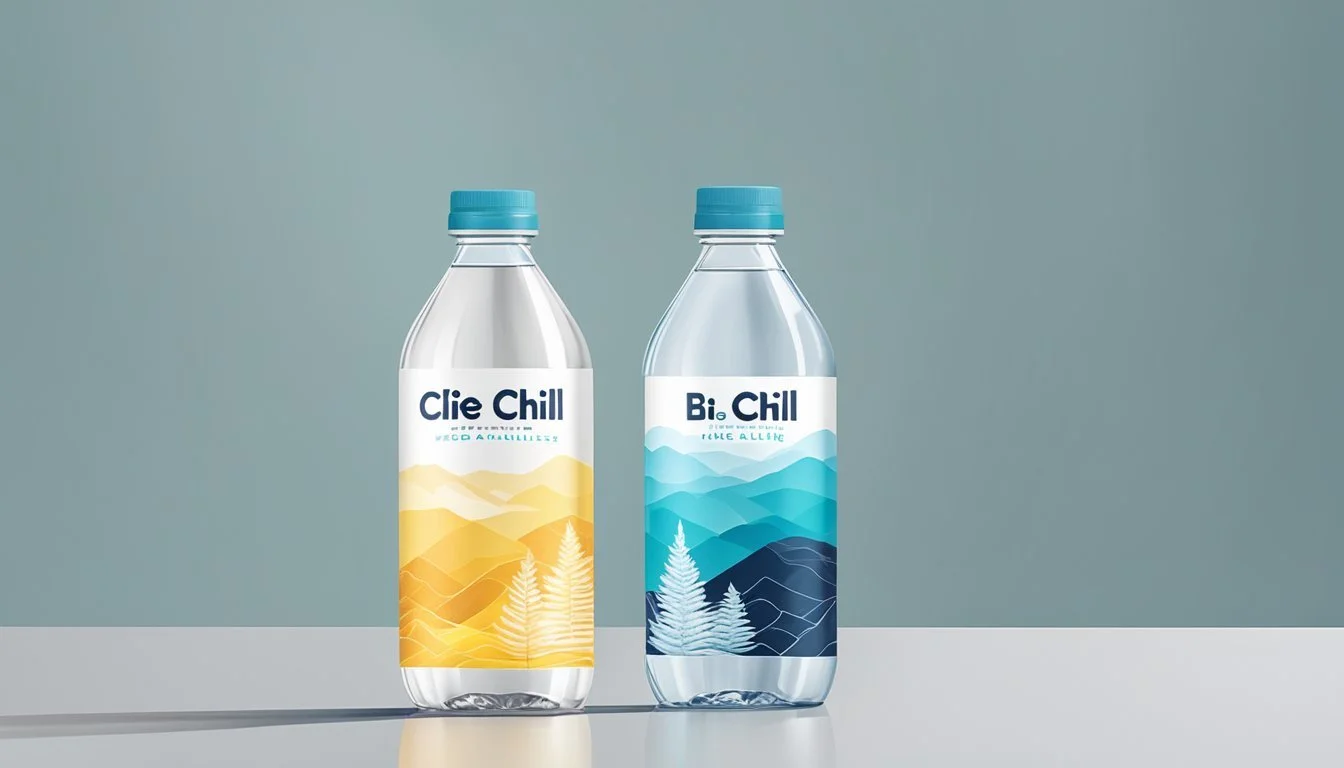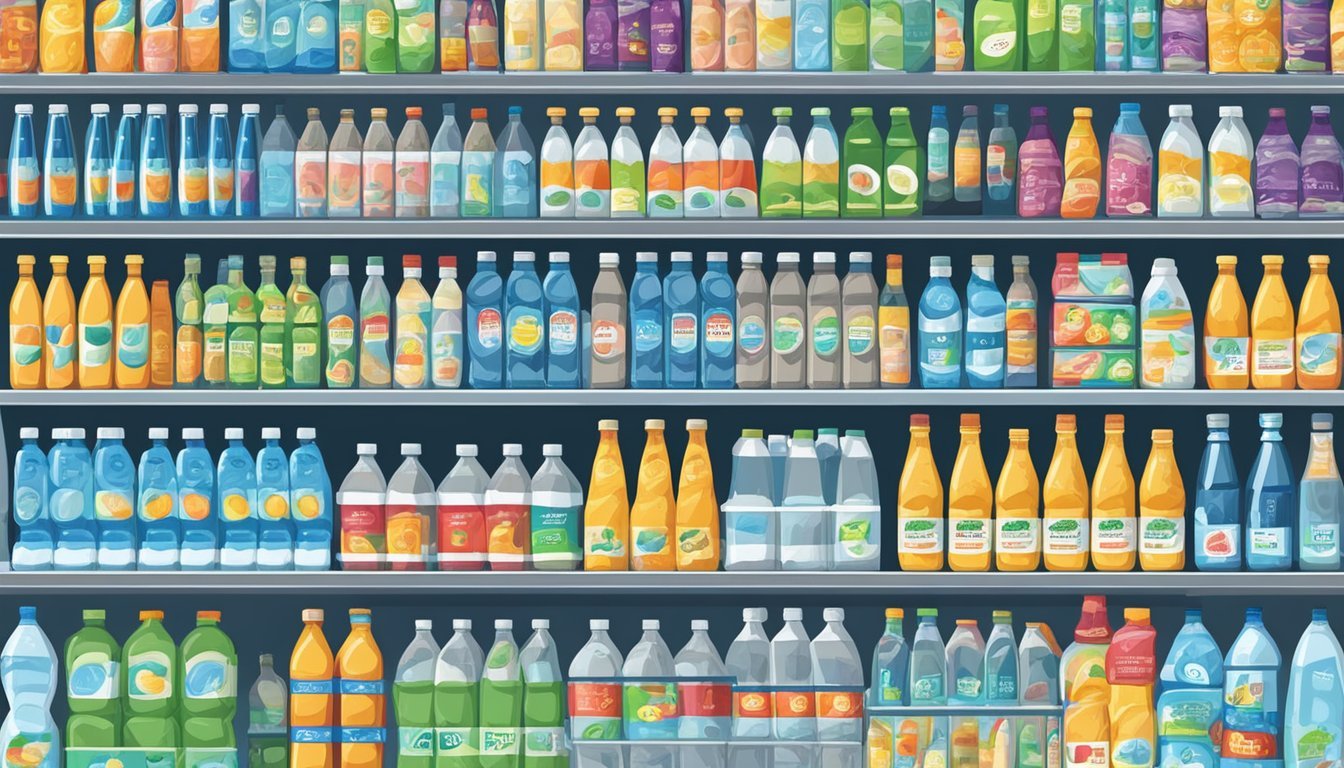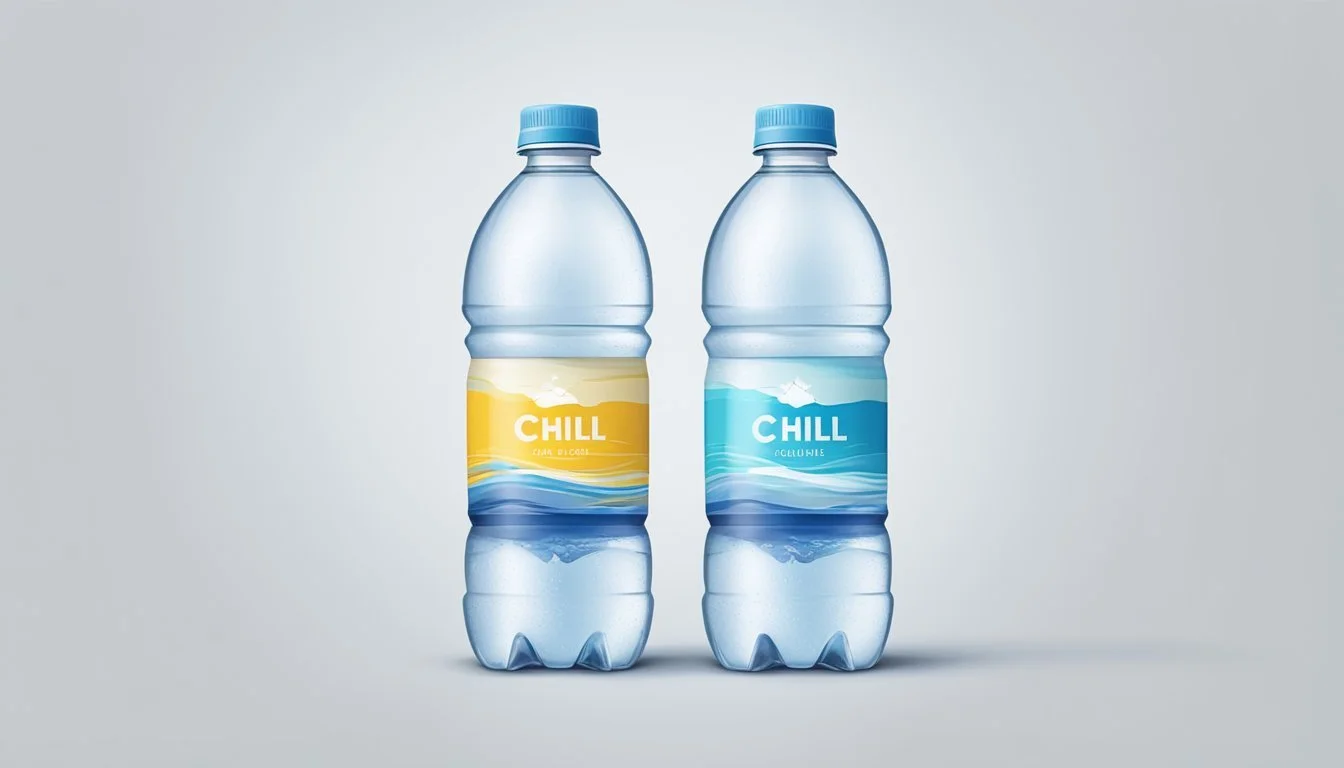Big Chill vs. Pure Life
Comparing Quality and Taste
When it comes to choosing the best bottled water, two popular options are Big Chill and Pure Life. Each brand offers various benefits that appeal to different preferences.
Big Chill is known for its clean, refreshing taste and consistent quality, making it a favorite among those who prefer a more premium option. On the other hand, Pure Life, while being widely available and economically priced, often faces criticism for its average taste and sourcing issues.
For consumers seeking a reliable, refreshing bottled water without breaking the bank, Pure Life may still be satisfactory. If taste and quality are paramount, Big Chill offers a superior experience. Ultimately, the choice between Big Chill and Pure Life depends on what factors you prioritize in your bottled water selection.
Understanding Bottled Water
This section delves into the different types of bottled water, the various processes used in their production, and the importance of regulatory standards and safety protocols.
Types of Bottled Water
Bottled water comes in various forms, each with distinct characteristics. The primary types include spring water and purified water. Spring water originates from natural springs and often contains various minerals, which can impact its taste and nutritional profile. Purified water, on the other hand, undergoes extensive filtration methods like reverse osmosis to remove impurities, providing a cleaner taste.
Other subtypes include mineral water, which has a specified mineral content, and distilled water, which is boiled and condensed back into liquid, removing all minerals. Each type of bottled water offers different benefits and may be preferred based on individual needs and taste preferences.
Manufacturing Processes
The production of bottled water involves several key stages. Spring water is usually sourced directly from underground springs and goes through minimal treatment to maintain its natural mineral content. Purified water involves advanced filtration processes, including reverse osmosis, distillation, and deionization. These processes effectively remove contaminants and dissolved solids.
Reverse osmosis forces water through a semi-permeable membrane, leaving impurities behind. Filtration systems, such as carbon filters, remove particles and improve taste by eliminating chlorine and organic compounds. The manufacturing process might also include the addition of minerals for taste or health benefits, depending on the brand's formula.
Regulatory Standards and Safety
Bottled water must comply with both federal and state safety standards to ensure it is safe for consumption. In the United States, the Food and Drug Administration (FDA) oversees bottled water regulations, ensuring that products meet strict criteria. These regulations cover various aspects, including source water protection, bottling practices, labeling requirements, and microbial safety.
Bottled water manufacturers must conduct regular testing to monitor pH levels, bacterial count, and possible contaminants. Consistent adherence to these regulations ensures that bottled water remains a safe and reliable option for consumers. The FDA's guidelines align closely with those of the Environmental Protection Agency (EPA), which regulates tap water, ensuring similar safety standards across different water sources.
Comparing Brand Profiles
Examining both Big Chill and Nestlé Pure Life reveals differences in origin, processing methods, and brand positioning, which can help consumers make an informed choice.
Big Chill Overview
Big Chill bottled water is recognized for sourcing its water from pure and natural springs. The brand focuses on minimal processing to maintain the natural minerals and taste of spring water.
Big Chill positions itself as a premium option, catering to health-conscious consumers who value natural sourcing and minimal artificial intervention. The packaging is often presented as eco-friendly, reflecting the brand's commitment to sustainability.
The quality of Big Chill is underscored by strict adherence to rigorous standards for purity and safety. While the brand isn't as widely known as some competitors, it has a loyal customer base that appreciates the focus on natural composition and environmental responsibility.
Nestlé Pure Life Overview
Nestlé Pure Life, a product of Nestlé, the world's largest bottled water company, offers purified water through a multi-step filtration process. This ensures consistent taste and quality, appealing to a broad consumer base looking for reliability in their water choice.
Nestlé Pure Life is often more accessible and can be found in various sizes and packaging options, making it convenient for everyday use. The brand emphasizes quality hydration at an affordable price, making it a popular choice for families and individuals alike.
As a result of Nestlé's extensive distribution network, Pure Life is available globally, ensuring consistency in taste and quality no matter where it is purchased. Quality control is a priority, with the brand adhering to strict purification and safety standards.
Health and Hydration
When comparing bottled waters like Big Chill and Pure Life, it's essential to consider factors like water quality and the presence of minerals and electrolytes. These elements play a critical role in hydration and health benefits.
Water Quality and Health Benefits
The key to selecting healthy bottled water lies in its purity and overall quality. Big Chill and Pure Life are known for their stringent purification processes. Pure Life is often praised for its consistent quality and adherence to safety standards.
Big Chill also meets high standards, ensuring that it is free from harmful contaminants. Alkaline water enthusiasts might be inclined toward brands that maintain a slightly higher pH level, believing it aids in balancing the body's pH.
In terms of health benefits, both brands provide clean and reliable hydration options. Hydration is crucial for supporting bodily functions, from maintaining skin health to aiding digestion. Clean, pure water free from impurities ensures that you're getting the best quality for your health needs.
Impact of Minerals and Electrolytes
Minerals and electrolytes significantly enhance the hydration quality of bottled water. Pure Life usually contains essential minerals such as calcium and magnesium, which support various bodily functions. Calcium plays a role in bone health, while magnesium is important for muscle function and maintaining heart rhythm.
Big Chill also often includes beneficial minerals, enhancing its health profile. Electrolytes like sodium and potassium can also be present, which are vital for maintaining fluid balance within the body and preventing dehydration.
When evaluating bottled water, consider the mineral and electrolyte content. Some find water with a balanced mix of these elements more refreshing and beneficial for long-term health. This careful balance can positively impact overall hydration and bodily function.
Taste and Purity Factors
Big Chill and Pure Life bottled waters are evaluated based on their taste and purity. Differences in water sources and filtration methods play essential roles in these factors influencing consumer preference.
Influence of Source Water
Big Chill typically sources its water from natural springs. These sources provide a unique mineral profile that can impart distinct flavors, which some consumers might find appealing. The mineral composition often contributes to what is perceived as a “clean” and “refreshing” taste.
Pure Life sources its water from various dedicated wells. This allows for more control over the consistent quality and flavor profile. Neutral-tasting water with a balanced profile is a key characteristic. Consistency is important to ensure that every bottle tastes the same.
Contaminants in source water can significantly affect taste and purity. Both brands ensure their water sources are free from harmful substances. However, the inherent differences in sourcing can still affect the final product's characteristics.
Role of Filtration and Purification
Big Chill employs both natural filtration through geological processes and additional purification methods. Spring water naturally passes through layers of rock, which filters out many impurities while retaining beneficial minerals. Subsequent purification processes ensure any remaining contaminants are removed, preserving the natural taste.
Pure Life relies heavily on controlled filtration and purification processes. The water undergoes filtration through activated carbon and other modern techniques such as reverse osmosis. This thorough purification process aims to eliminate any trace contaminants and dissolved solids, resulting in a more neutral taste.
Filtration methods are critical in determining the water purity and taste. While Big Chill retains more natural minerals, Pure Life’s rigorous purification can produce a more consistent and predictable flavor.
Consumers must consider which aspects are more important: the natural taste of spring water or the guaranteed consistency and purity of processed water.
Environmental Considerations
Environmental factors play a crucial role when choosing between Big Chill and Nestlé Pure Life bottled waters. Key areas include the types of packaging used and the sustainability initiatives adopted by each brand.
Packaging and Plastic Waste
Big Chill uses recyclable plastic bottles that aim to minimize environmental impact. These bottles are designed to be lightweight, reducing transportation emissions. However, plastic waste remains a concern, as recycling rates are not always sufficient to mitigate landfill accumulation.
Nestlé Pure Life also packages its water in recyclable plastic bottles. Moreover, they have launched initiatives to increase the use of recycled plastic (rPET) in their bottles. Despite these efforts, the sheer volume of bottles produced contributes to substantial plastic waste annually.
Sustainability Efforts by Different Brands
Big Chill has undertaken several sustainability projects, such as reducing water usage in its manufacturing process and promoting the use of renewable energy sources. They also participate in environmental education campaigns to increase public awareness about sustainable practices.
Nestlé Pure Life has a more extensive set of sustainability efforts. They focus on responsible water sourcing, eco-friendly packaging innovations, and support for water conservation projects globally. Additionally, Nestlé invests in improving recycling infrastructure to ensure that more bottles are properly recycled rather than ending up in landfills.
Both brands are making strides to reduce their environmental footprint, yet challenges remain in fully addressing the plastic waste and sustainability issues associated with bottled water.
Consumer Choices and Market Trends
Consumer choices in bottled water are influenced by a mix of brand loyalty, preferences, accessibility, and convenience. Market trends reflect these factors and unveil the dynamics that guide decisions.
Brand Loyalty and Consumer Preferences
Many consumers show strong brand loyalty towards their bottled water of choice. For instance, Big Chill attracts customers looking for premium natural spring water, often marketed as pure and fresh. On the other hand, Nestlé Pure Life benefits from its position as a widely recognized brand under the Nestlé umbrella.
Brand loyalty is often influenced by perceived quality, taste, and trustworthiness. Research highlights that some consumers prioritize water that tastes clean and natural. This often drives their repeated purchases. Big Chill's emphasis on being sourced from natural springs provides an edge for those preferring minimally processed options.
Consumers are also swayed by marketing and branding efforts. Companies that effectively communicate their product’s benefits tend to secure a more dedicated customer base.
Accessibility and Convenience
Accessibility remains a key factor in consumer choices regarding bottled water. Brands like Pure Life, which are extensively distributed in grocery stores, convenience stores, and online platforms, enjoy widespread visibility. This makes it easier for consumers to opt for them during regular shopping trips.
Convenience also comes into play. Smaller, portable bottles are popular for on-the-go consumption, while larger packs are preferred for home use. Pure Life's extensive distribution network ensures that its products are readily available across various retail channels and sizes, appealing to a broad range of consumer needs.
Big Chill, although positioned as a premium brand, must maintain accessibility through strategic placements in high-traffic retail locations to capture a larger market share. Even premium brands need to be within reach to convert occasional buyers into loyal customers.
Analyzing Additional Factors
Big Chill and Pure Life differ in several aspects that go beyond basic taste and quality, notably in their additional enhancements and cost.
Comparison of Additional Enhancements
Big Chill often markets its water as naturally sourced with minimal processing. This can appeal to consumers looking for a more natural option.
In contrast, Pure Life frequently adds minerals, such as potassium chloride, to enhance taste. This brand is known for its consistent, neutral flavor, often achieved through rigorous purification processes and enhancements.
Pure Life's commitment to achieving a balanced mineral content is a key selling point. These added minerals can improve not just taste but potentially perceived hydration benefits, appealing to a segment of health-conscious consumers.
Cost Considerations
Cost differences between Big Chill and Pure Life can also influence consumer choice. Big Chill is typically positioned as a premium product, often reflecting higher pricing due to its branding and sourcing.
Prices for Pure Life tend to be more moderate, aligning with its goal of being an affordable, yet quality option. For example, a 24-pack of Pure Life 16.9oz bottles can range between $3.50 to $5.00.
This price point makes Pure Life accessible for daily use, positioning it as a practical choice for budget-conscious buyers without compromising on quality or enhancements.







